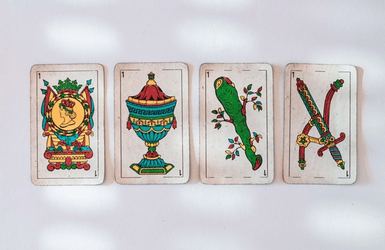/*! elementor – v3.8.0 – 30-10-2022 */
.elementor-widget-image{text-align:center}.elementor-widget-image a{display:inline-block}.elementor-widget-image a img[src$=”.svg”]{width:48px}.elementor-widget-image img{vertical-align:middle;display:inline-block}
/*! elementor – v3.8.0 – 30-10-2022 */
.elementor-heading-title{padding:0;margin:0;line-height:1}.elementor-widget-heading .elementor-heading-title[class*=elementor-size-]>a{color:inherit;font-size:inherit;line-height:inherit}.elementor-widget-heading .elementor-heading-title.elementor-size-small{font-size:15px}.elementor-widget-heading .elementor-heading-title.elementor-size-medium{font-size:19px}.elementor-widget-heading .elementor-heading-title.elementor-size-large{font-size:29px}.elementor-widget-heading .elementor-heading-title.elementor-size-xl{font-size:39px}.elementor-widget-heading .elementor-heading-title.elementor-size-xxl{font-size:59px}
TOYS FROM SPAIN THAT MAKE GREAT GIFTS
There’s many reasons to look for Spanish toys as gifts. Maybe you want them to become familiar with Spain’s culture, or learn the language, or even build expectation about an upcoming trip. In this post you’ll find lots of ideas and inspiration to find the perfect game or toy from Spain or about it. There’s so many options!
Because did you know that Spain is one of the leading toy manufacturers in Europe? And that toys have been intimately close to Spanish history, up to the point that an articulated doll was found in an infant tomb from the Roman times in Tarragona, near Barcelona? You can see it in the National Museum of Archaeology of Tarragona. And a simpler one was found in Merida and is now displayed in the National Museum of Archaeology in Madrid.
But it wouldn’t be until the late 1700’s when the first toy workshops started opening, expanding to other regions such as Valencia over the next decades, at the same time that the first specialty toy stores started opening in the main capitals. Then said small workshops became factories with the arrival of the Industrial Revolution, and the rest, as they say, is history. But enough of words! Let’s get inspired with the magic of the toys of Spain!
1
Popular board games from Spain
/*! elementor – v3.8.0 – 30-10-2022 */
.elementor-widget-image-box .elementor-image-box-content{width:100%}@media (min-width:768px){.elementor-widget-image-box.elementor-position-left .elementor-image-box-wrapper,.elementor-widget-image-box.elementor-position-right .elementor-image-box-wrapper{display:-webkit-box;display:-ms-flexbox;display:flex}.elementor-widget-image-box.elementor-position-right .elementor-image-box-wrapper{text-align:right;-webkit-box-orient:horizontal;-webkit-box-direction:reverse;-ms-flex-direction:row-reverse;flex-direction:row-reverse}.elementor-widget-image-box.elementor-position-left .elementor-image-box-wrapper{text-align:left;-webkit-box-orient:horizontal;-webkit-box-direction:normal;-ms-flex-direction:row;flex-direction:row}.elementor-widget-image-box.elementor-position-top .elementor-image-box-img{margin:auto}.elementor-widget-image-box.elementor-vertical-align-top .elementor-image-box-wrapper{-webkit-box-align:start;-ms-flex-align:start;align-items:flex-start}.elementor-widget-image-box.elementor-vertical-align-middle .elementor-image-box-wrapper{-webkit-box-align:center;-ms-flex-align:center;align-items:center}.elementor-widget-image-box.elementor-vertical-align-bottom .elementor-image-box-wrapper{-webkit-box-align:end;-ms-flex-align:end;align-items:flex-end}}@media (max-width:767px){.elementor-widget-image-box .elementor-image-box-img{margin-left:auto!important;margin-right:auto!important;margin-bottom:15px}}.elementor-widget-image-box .elementor-image-box-img{display:inline-block}.elementor-widget-image-box .elementor-image-box-title a{color:inherit}.elementor-widget-image-box .elementor-image-box-wrapper{text-align:center}.elementor-widget-image-box .elementor-image-box-description{margin:0}

It’s funny how games I’ve always played at home don’t always have their equivalent in the rest of the world! And I couldn’t imagine a childhood without them. That is the case of two very popular games that are present at any Spanish household with kids: Parchís and Juego de la oca. Parchís is a dice board game for 4 players (although sometimes you can find boards for 6 or 7 players) where you need to bring your 4 pawns from the “nest” to the “house”, around the board and “killing” competitor pawns on the way. It’s a game from the same family of Ludo and Pachisi.
And in Spain you’ll often find a second board game printed on the reverse side of a Parchís game: the Juego de la Oca (game of the goose). It’s a racing board game similar to Snakes and Ladders, but each square is decorated with a different drawing, some of them affecting the course of the game: a skull, a prison, a well, two dices, two bridges and several gooses. When you fall on a goose, you say “De oca a oca y tiro porque me toca“, move your pawn to the next goose and throw the dice again.
Also, do you know that in Spain we have our own playing cards? The Spanish-suited cards have four suits: bastos (clubs), espadas (swords), oros (golden coins) and copas (cups), and 40, 48 or 50 cards – depending if they include 8s and 9s or 2 additional jokers. You won’t play poker with them, but there’s many other fun games to discover. I grew up playing “La Mona”, “El Burro”, “Siete y Medio”… these are fun card Spanish games to play with kids. Adults play more complex games such as the Brisca, the Tute, the Botifarra, the Mus…
Finally, I couldn’t go without mentioning Futbolin, a table soccer game documented in Spain since the 1890’s, and very commonly seen in village bars. It consists of a four-legged table topped with a small soccer field and several rods across it with miniature players of two teams attached to them. The players need to use the rods to move the figurines and hit the ball until they score in their rival’s gate. It’s fun, but it requires more space to store it once you are done playing (so be warned).








